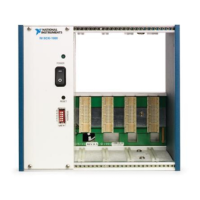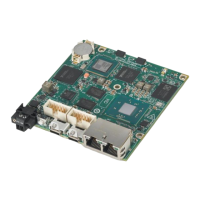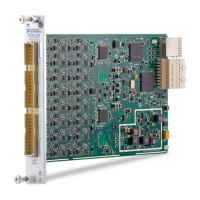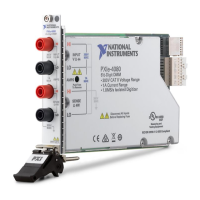© National Instruments Corporation 1-1 SCXI-1120/D User Manual
1
Introduction
This chapter describes the SCXI-1120/D; lists what you need to get started;
describes the optional software, optional equipment, and custom cables;
and explains how to unpack the SCXI-1120/D kit.
About the SCXI-1120/D
The SCXI-1120/D has eight isolated input channels. The SCXI-1120 is a
module for signal conditioning of thermocouples, volt sources, millivolt
sources, 4 to 20 mA current sources, and 0 to 20 mA process-current
sources. If external excitation is provided, thermistors, RTDs, and strain
gauges can also be measured. The SCXI-1120D is a module for signal
conditioning and isolating volt sources, millivolt sources, and current
sources that require a bandwidth of up to 20kHz. If you provide external
excitation, you can use strain gauges and other vibration sensors. The
SCXI-1120/D can operate in two output modes—in the parallel-output
mode with all eight input channels connected in parallel to eight DAQ
device channels, or in the multiplexed-output mode with all eight channels
multiplexed into a single DAQ device channel.
The SCXI-1120/D operates with full functionality with the National
Instruments MIO, 1200 Series, and Lab PC+ devices. You can use the
Lab-NB, the Lab-PC, the Lab-LC, and the PC-LPM-16/PnP devices with
the SCXI-1120/D, but these devices cannot scan the module when it is
configured in the multiplexed-output mode. These devices can perform
only single-channel reads in this mode. You can multiplex several
SCXI-1120/D modules into a single channel, thus greatly increasing the
number of analog input signals that can be digitized.
The addition of a shielded terminal block provides screw terminals for easy
signal attachment to the SCXI-1120/D. In addition, a temperature sensor
for cold-junction compensation (CJC) of thermocouples is included on the
terminal block. This cold-junction reference (CJR) is either multiplexed
along with the eight channels or connected by jumpers to a different
channel of the DAQ device.
